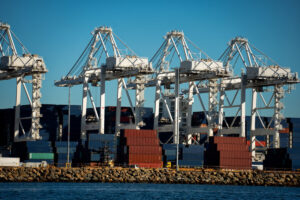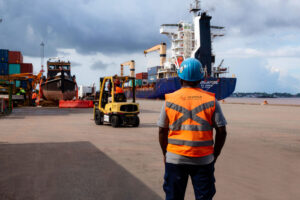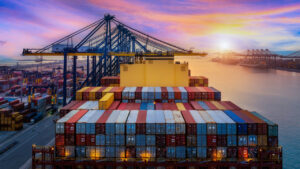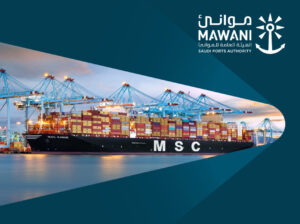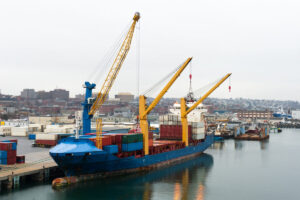The COVID-19 pandemic could be a substantial driver in the adaption of new technologies, collaborative solutions and a greater utilisation of space and resources.
A new study from ABI Research suggests it will accelerate digital innovation across the global economy, with technologies such as drones, artificial intelligence (AI)-based surveillance, digital twins, autonomous freight and real-time dashboards being utilised as industries search for new solutions.
The study suggests that cities in particular could benefit as the economy recovers and government’s implement digital initiatives that ease pressure on infrastructure and cut emissions.
These include streamlining the supply chain of essential goods, such as medical supplies and food, with autonomous freight solutions improving last-mile delivery.
Actions taken by governments, ABI said, will have a “lasting impact” on the global economy and, ultimately, make technology and the industries that rely on them more resilient. Dominique Bonte, Vice President End Markets at ABI, describes this as a “distinct silver lining on a very dark COVID-19 cloud.”
How will COVID-19 affect the maritime industry?
The effects of the pandemic and the subsequent recovery will be wide-reaching. As mentioned above, it will have a profound effect on the supply chain, and therefore ports as well.
For the maritime sector, this will mean an even greater emphasis on supply chain visibility and collaboration. It could also help, or perhaps hinder, the long-running debate around data standardisation.
Increased investment in technology will ultimately require strengthening the means to protect digital infrastructure – cyber-security.
Ports will have to get smarter to manage ever increasing amounts of cargo, itself moved by smart technology. By that we mean they have to utilise new technologies, such as AI, blockchain and the internet of things (IoT).
Ports are already vulnerable to cyber-attacks because the maritime part of the supply chain has so many data points, such as vessel navigation, cargo handling and container tracking.
The more technology a port uses, the more this risk increases, and this will require greater understanding and increased investment in security, in particular AI resilience.
PTI Webinar: Artificial Intelligence & Resiliency
AI itself might be a solution in ports’ struggle against cyber-crime, with machine reasoning, an alternative to machine learning, becoming more prevalent.
Additionally, ports will have to speed up their own storage and processing innovations, and themselves find new ways to meet demand – a trend which has been in motion for some due to the so-called ‘Amazon Effect’.
The ‘Amazon Effect’ is a broad term to describe the substantial changes the supply chain has experienced in the past decade. In particular, it refers to increased customer expectations and the need to get goods to customer’s door faster.
This adds to the pressures mentioned above and is itself caused by increased accessibility to goods via e-commerce. It means ports have become vital parts of companies’ supply chains, such as Amazon and Maersk.
PTI Webinar: Port-Centric Logistics
Instead of simply being convenient avenues of import and export, ports are now being chosen because they fit in with an integrated trade and digital ecosystem that allows for seamless trade.
In practice, ports have to get goods out as fast as they get them in. This requires increased automation and storage space, and it is already leading to a reappraisal of the role of warehouses in ports, and how they fit in with a port’s operations and the wider supply chain.
In essence, the major trend of the past decade has been how ports can utilise its long-standing and most valuable assets, such as people and warehouses.
This is important to remember because none of the trends are new but will, as the ABI study suggests, be accelerated by the COVID-19 pandemic, as ports will need to develop new means of meeting an already breathtakingly high demand.
Trade, vessels and customer expectations have been increasing for years, which has created the concept of port-centric logistics, the idea, as already mentioned, that ports transform themselves into hubs of innovation and enablers of free trade.
Another study, this time conducted by Ocean Insights, said that 42% of those in the freight industry will change their supply chain strategies as a result of the pandemic, and 67% see technology as the key to doing so.
To what extent ports are central to that change remains to be seen.



